


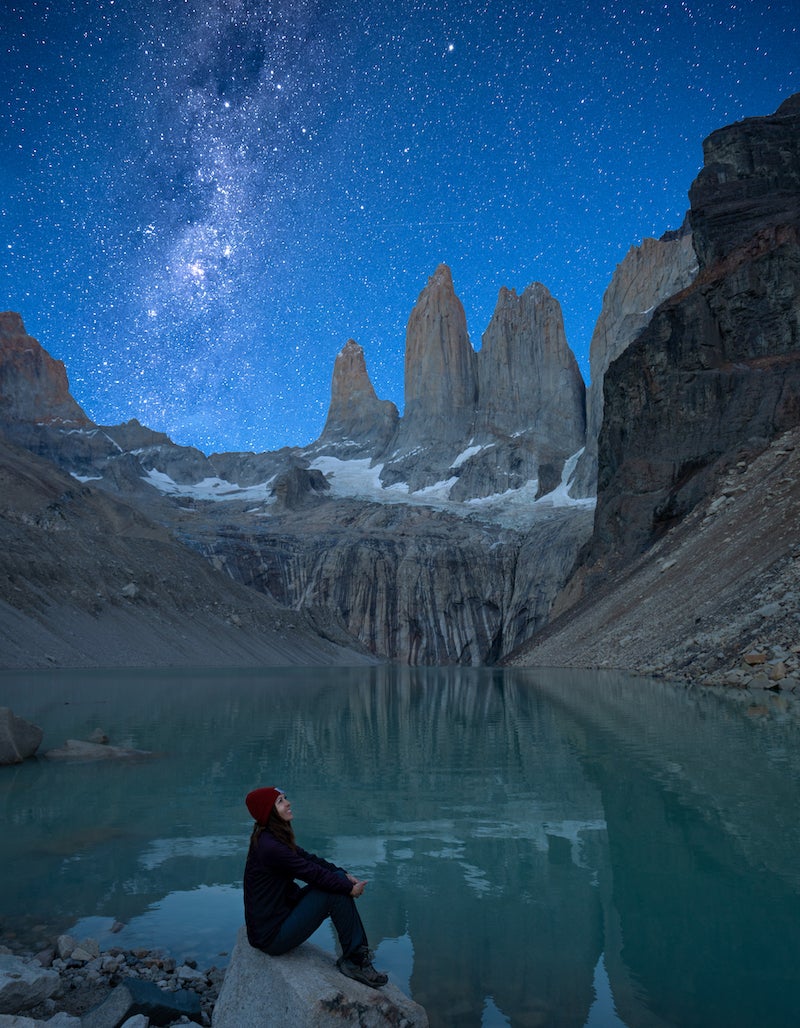
Straddling two countries and serving as home to rugged and imposing mountains, giant calving glaciers, and some of the world’s most adventurous spirits, Patagonia has etched itself into the fabric of my heart. After spending three months chasing horizons and navigating the unpredictable dance of the southern winds, I’ve whittled my time there down to eight can’t-miss trails that I still dream of today. If heading there is on your bucket list, you can’t go wrong with any of these trips.
Keep in mind that in Patagonia, adventure and challenge go hand-in-hand. I’ve learned that being prepared to experience all four seasons in one day is imperative. So is strapping down that backpack rain cover as if your life depends on it, because in some conditions, it does. Strong winds and rain can delay hikers on the trail, so be sure to bring enough food for a few extra days, and pack a waterproof shelter even if you’re just heading on a dayhike. (Thankfully, clean water is ever-abundant in the area thanks to the wealth of glacial melt.)
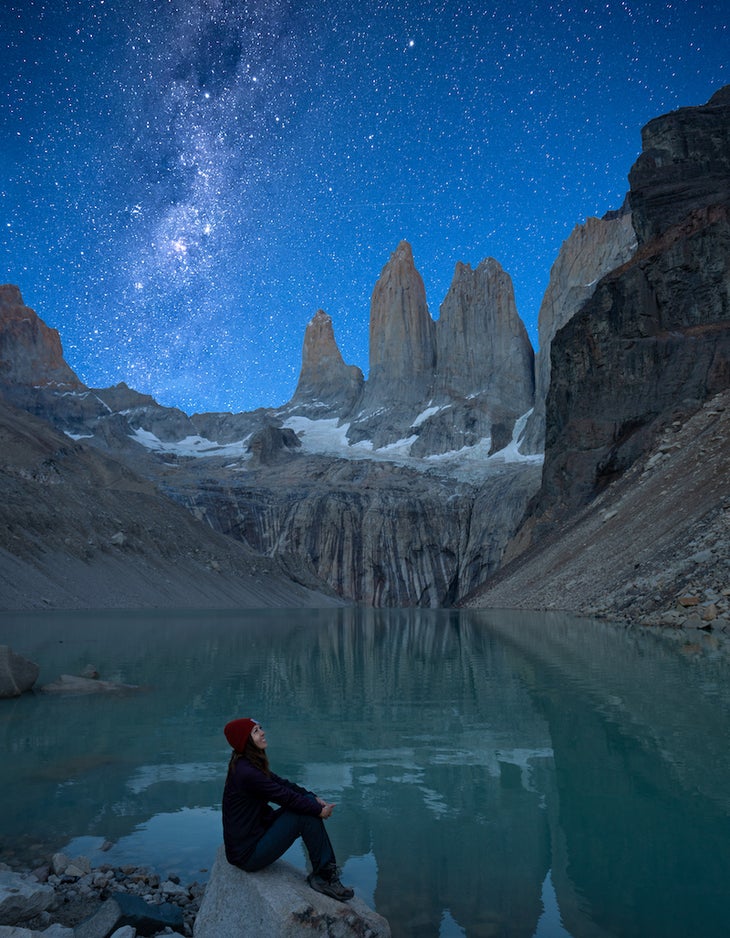
Length: Approximately 80 miles (130 kilometers) over 7 to 9 days
Difficulty: Moderate to challenging
Access: The trailhead is accessible from Puerto Natales, and you’ll have to pay a fee to enter the park. Due to its popularity, booking campsites or refugios, which are small huts that often have showers and bunk bed space available for rent, in advance is essential.
Trekkers in the know often consider the O Circuit in Torres del Paine National Park in Chile Patagonia’s crown jewel. It’s one of the most magical hikes I’ve ever experienced. If you only have time for one hike in Patagonia, make it this one: Each day offers a completely different experience and view. It’s also one of only four trails in Patagonia where you can witness the majesty of the Southern Patagonian Ice Field, the world’s second largest contiguous extrapolar expanse of ice. Though you won’t need to don crampons and cross it, you’ll be hiking right across from it for almost the entire fourth day of the trip.
Many choose to just hike the W, which is a 4 to 5 day section within the O Circuit that avoids the highest point on the trail, the John Gardner pass. But doing the whole thing is totally worth it: The three additional days that make it the O are less crowded, and some of the most beautiful out of the entire trip. This is also one of the only hikes in Patagonia where you can reserve refugio space, meals, and even pre-pitched tents ahead of time, which significantly lightens your load. It’s also one of the most popular hikes in Patagonia, so book your trip up to a year ahead.
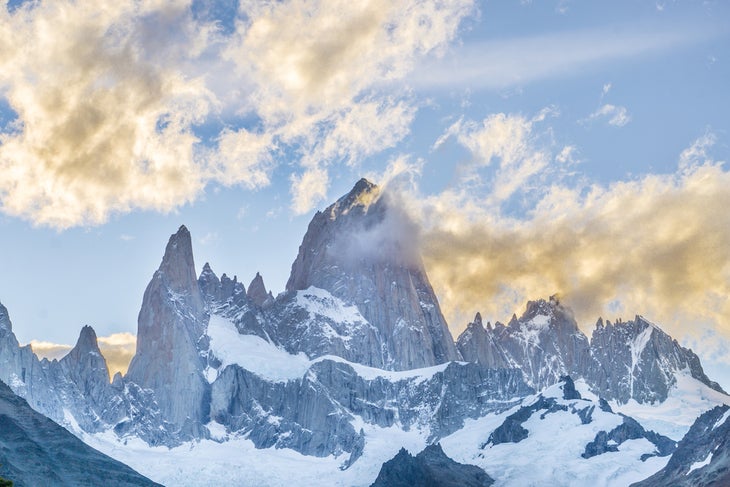
Length: Variable; shortest route is 16 miles (26 kilometers)
Difficulty: Moderate to challenging
Access: El Chaltén serves as the starting point for Fitz Roy hikes. The town is easily reachable from El Calafate by bus.
One of the most legendary views in Patagonia, Fitz Roy is a famous and popular trek for good reason. Though you’ll be sharing it with plenty of other hikers, it is still so worth doing for a glimpse the legendarily rugged mountain and lake view at the top. Most of the trail is flat and lovely, with the exception of the last hour of steep, rocky terrain. It’s also possible to camp at the base and climb to the top to see the sunrise illuminate the jagged mountains.
Not looking for a long dayhike or a backpacking trip? If you’d rather stay in town but still see the mountains, the easier and more accessible 1.25-mile (2-kilometer) Condor Lookout trail is a great option.
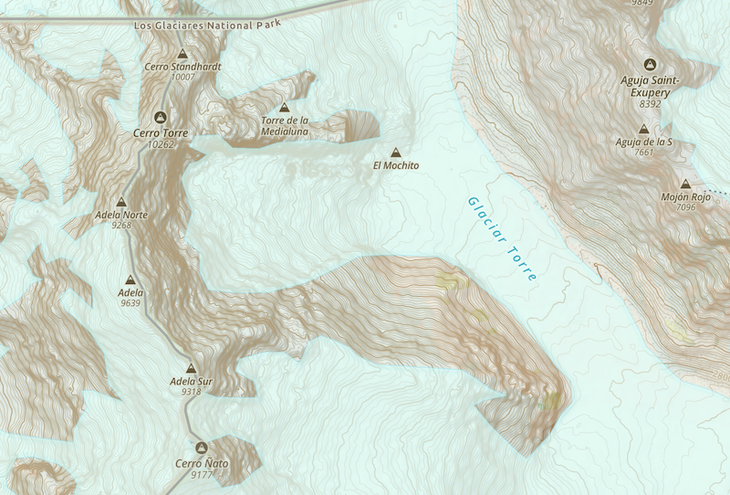
Length: Variable, shortest route is 15 miles (24 kilometers)
Difficulty: Easy
Access: El Chaltén serves as the starting point.
Like Fitz Roy, Cerro Torre in El Chaltén is a do-not-miss. This is also a mostly flat hike without the climb to the top that Fitz Roy has. Most of it is through lovely landscape with scrubby bushes and some boardwalks, and although the hike is long, its lake and jagged peak view at the end is worth it. Bring a zoom lens to peep climbers on the face of the rock. It’s also possible to combine this and the Fitz Roy hike for one long but beautiful day.
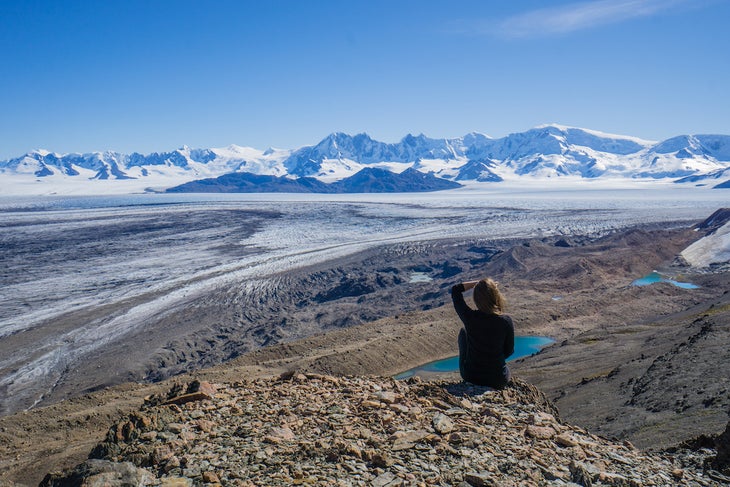
Length: Approximately 39 miles (63 kilometers) over four days
Difficulty: Challenging
Access: The trail starts near El Chaltén.
The Huemul (pronounced wey-mool) Circuit is a grueling, a four-day symphony of endurance that will test any hiker’s mettle. I will always remember navigating the worst downhill of my life on this trail: It’s steep and on loose dirt with very little to brace on, and is not for the faint of heart. But, oh, the scenery: Smaller crowds, panoramic vistas, and the wildness of it all make it one of the most beautiful treks I can remember doing.
You’ll need to be totally self-sufficient on this trail. You’ll also need to bring or rent a harness and pulley from one of the shops in El Chaltén to pull yourself across not one, but two rivers on Tyrolean traverses, metal lines strung across the water. It’s another opportunity to see the Southern Patagonian Ice Field, but the difficulty makes it less popular than the O Circuit, so you won’t have to share it with many people. The views of the ice field, glacial lagoons, and mountain peaks just don’t stop, and you’ll remember the breathtaking glacial lakes long after your knees and quads stop whining.
Length: Approximately 22 miles (37 kilometers)
Difficulty: Challenging
Access: Villa O’Higgins and El Chaltén are the start and endpoint, respectively. This trail involves a boat crossing and requires thorough planning.
Although an atypical suggestion for hikes in Patagonia, this is one of the more unique and quiet trails out there, where most of the day you’ll be walking through no-man’s land. Thankfully the path is well established, so you won’t need much in the way of routefinding skills.
Villa O’Higgins lies at the end of the Carretera Austral, the mostly-gravel road on the Chilean side of Patagonia. Most tourists don’t make it all the way to the end, because if they do, they’ll either have to turn around or take a boat then hoof it all the way into Argentina. Still, it’s a true adventure, gliding through a glacier lake followed by an evening at the farm on the other side, then a long, peaceful, sometimes muddy walk into Argentina’s El Chaltén.
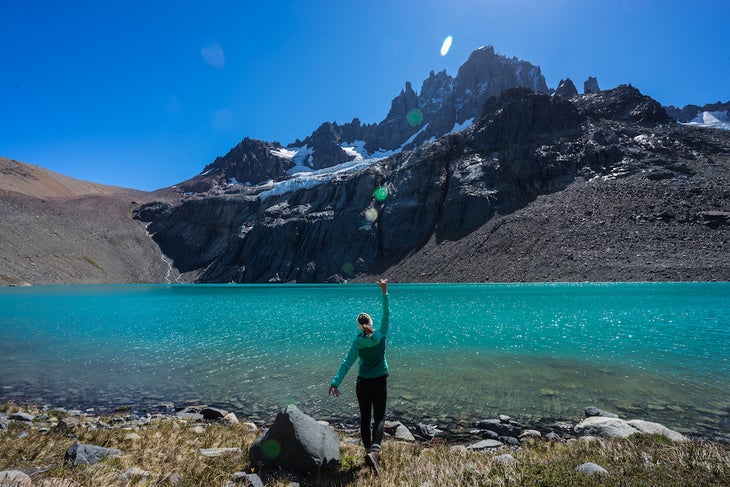
Length: Approximately 30 miles (48 kilometers)
Difficulty: Moderate to Challenging
Access: The trail begins in Villa Cerro Castillo, accessible by bus or thumb from Coyhaique.
One of the more remote suggestions on this list, Cerro Castillo is an aquamarine lake at the base of a crown of jagged mountains. Although there are many such lakes and views in Patagonia, this is one of just a few that you can get all to yourself. The tiny, rural town along the Carretera Austral only has a few homestays, but it’s one of the more authentic places to lay your head in all of Patagonia, and few other tourists ever visit.
Want to cut this hike a little short? The “emergency route” is a steep one-day hike from the lake to town, and despite the name is accessible for general, non-emergency travel too. Cut your backpacking trip short by taking this route as an early bailout point, or use it as a steep dayhike to see the lakeside views. Either way, you can tote a tent and overnight at the lake (leaving no trace, of course), or spend the night in Villa Cerro Castillo near the trailhead.
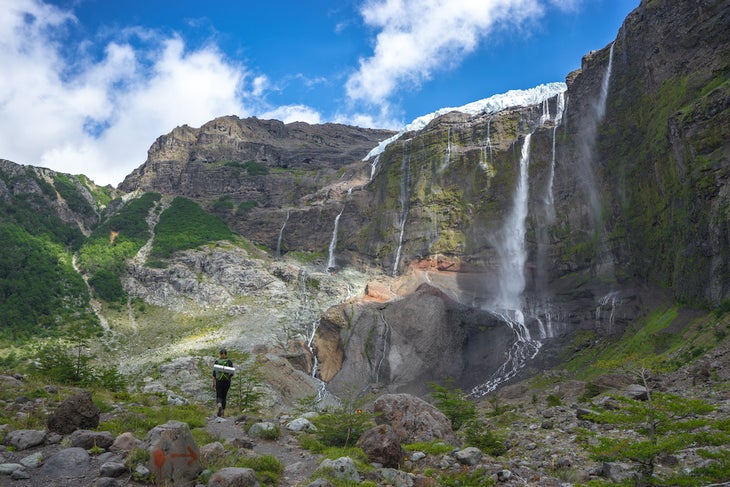
Length: Typical route is 8.7 miles (14 kilometers)
Difficulty: Moderate to challenging
Access: Bariloche is a common starting point for Tronador hikes, with buses connecting from nearby towns.
Widely considered the gateway to Patagonia, Bariloche is a town of lakes, mountain peaks, and ski lifts in the winter. Though there are many gorgeous hikes in the area, the Tronador is my favorite for the cascading waterfalls and the chance to set up camp on the mountain peak. The mountain bisects the borders between Argentina and Chile, but the easiest access point is on the Argentine side.
The path to Tronador weaves through ancient forests and alpine meadows, leading to a glacier-clad summit with next-level stargazing. There’s a small refugio, but most visitors tote a tent and spend the night tucked into the rocky landscape.
From 2024

